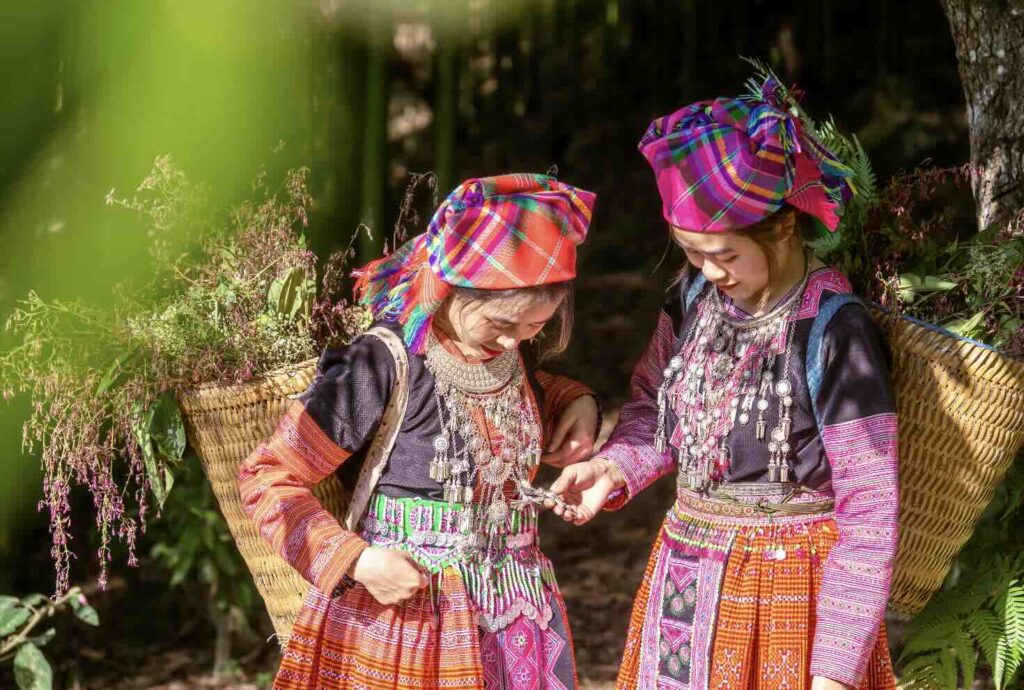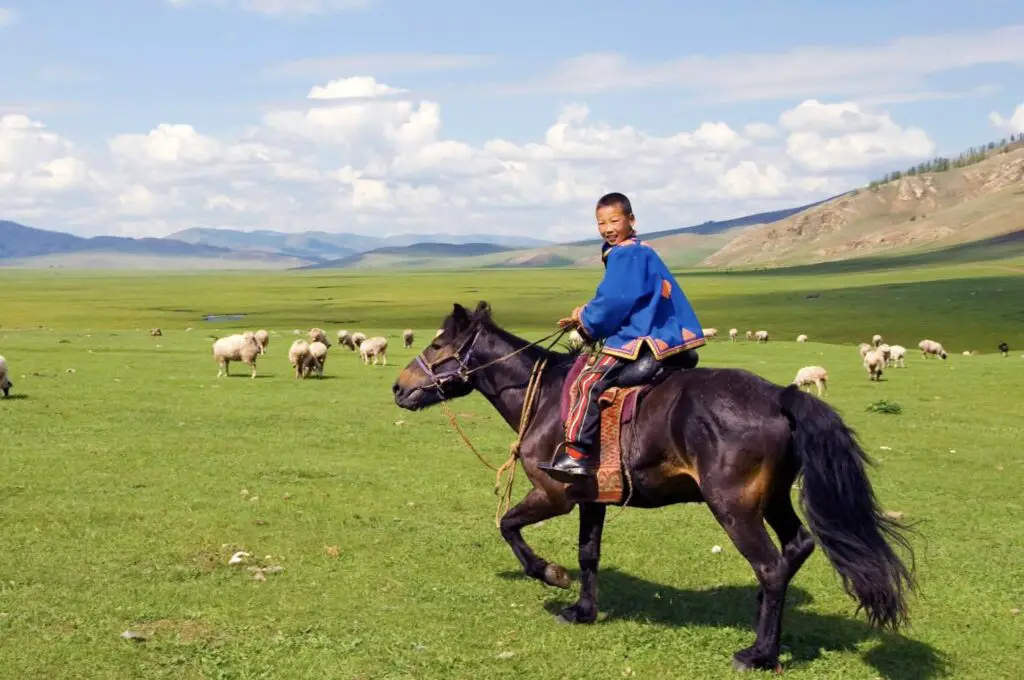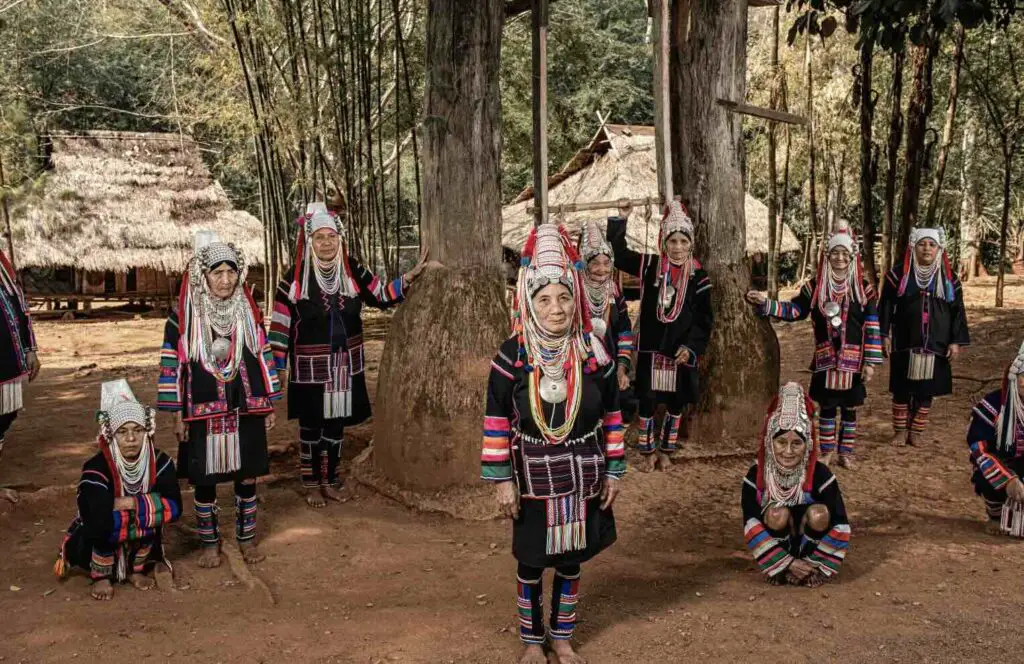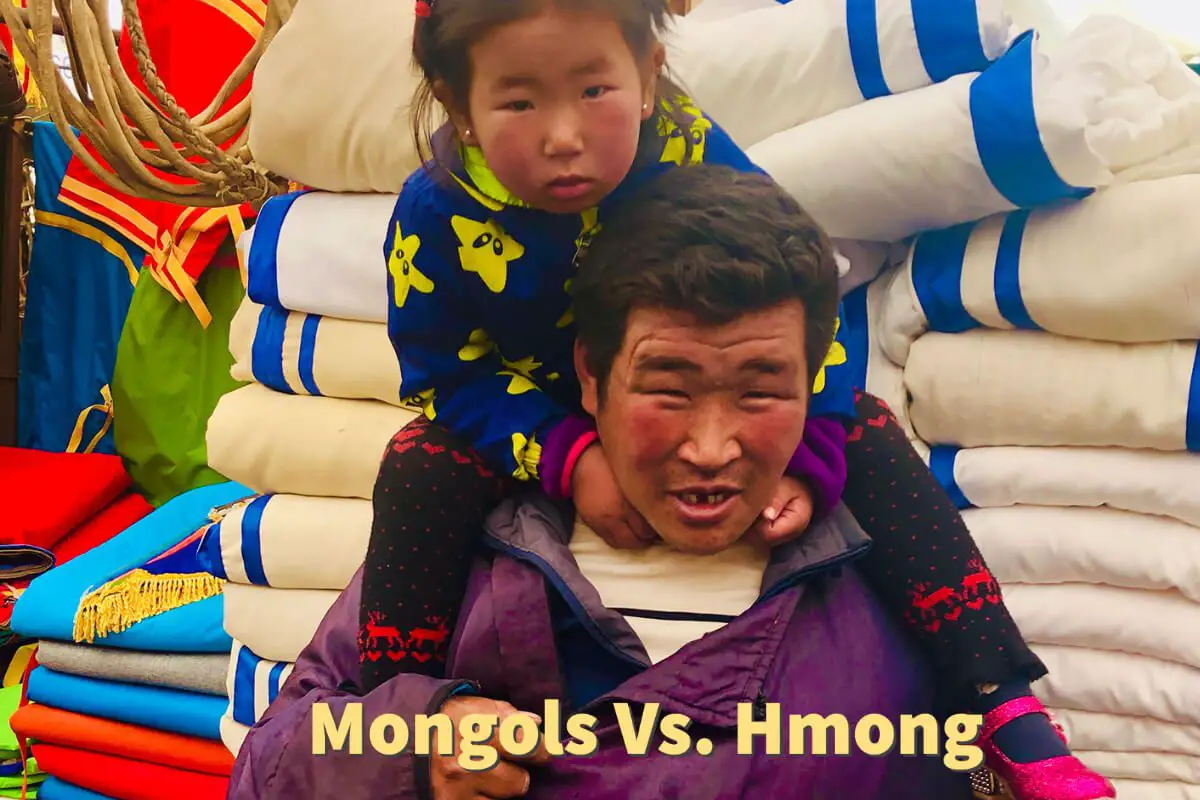Hmong and Mongol can sound very similar names, so there can be confusion if they are the same group of people or even related. Both of these groups come from Asia.
The Hmong people are from China and have migrated to southeast Asia, mainly Vietnam, Laos, Thailand, and Myanmar (Burma). The Mongols, also known as Mongolians, live mainly in Inner Mongolia (China) and Mongolia. The Hmong mainly live in the mountains, whereas the Mongols are nomadic herders.
Table of Contents
- Hmong Vs. Mongol People
- My Observations – Hmong And Mongolian People
- 10 Reasons to Visit the Hmong in Vietnam and Travel to Mongolia
- Related Content
Even though they may have similar-sounding names and are from different parts of Asia, they are two very different groups of people.
Here is more information on the Hmong and Mongol people and why they are not the same group.
Hmong Vs. Mongol People
There can be a lot of confusion about whether the Hmong and the Mongol people are related. Some may share some DNA as they both are around the Asian area, but it would be such little genetic DNA that it is hardly mentioned.
If a Hmong or even a Chinese person took a genetic DNA test, they might find some Mongol blood in them. This would be because, for many years, Genghis Khan conquered most parts of Asia.
But this would not be every Mongol or even Hmong person but only those who maybe had some genetic DNA markers because they had a Mongolian relative somewhere in their line.
During the Mongolian King Genghis Khan’s rule, Mongolia ruled most of Asia, including central and east Asia. It could be that many Mongolians intermarried with Hmong, Han Chinese, and even other ethnic groups in China.
But this would be where their similarities are; the Hmong and Mongolians have far more differences than similarities.

Differences Between Hmong And Mongolian People Explained
There are many distinct differences between the present-day Hmong and Mongolians, Everything from their language and culture to where and how they live.
Below is a chart to show the significant characteristics of the Hmong and Mongolians. If you look at this chart, you can see that they have hardly anything in common.
| Characteristic | Hmong | Mongolian (Mongols) |
| Location | China, Vietnam, Laos, Thailand, Myanmar | Mongolia |
| Religion | Animism | Tibetan Buddhism |
| Language | Hmong-Mien Language | Altaic Language |
| Migration | Migrated Out Of China Southward to Vietnam, Lao, Thailand, and Myanmar | No Migration – Mainly in Mongolia and Inner Mongolia (China) |
| Economy | Use to practice “slash and burn” agriculture techniques. Mainly farmers who grow on the mountainside. | Nomadic lifestyle Herders of sheep, goats, camels, and yaks. |
| China’s Ethnic Classification | Miao | Mongol |
| No of People in China | about 3 million | About 5.9 million |
| Population Outside China | About 1.3 million (scattered around Southeast Asia and World) | About 3.2 million people in Mongolia |
You can see that the Hmong and Mongols are very different groups. Everything from their language, religion, economy, lifestyle, and where they live is completely different.
The Mongols lived mainly in colder climates and were nomadic herders. Even today, if you travel to Mongolia, many still live in the gers or yurts. They produce a lot of cashmere, wool, and other yarns. The climate the Mongols live in is frigid.

On the other hand, the Hmong live mainly in Southern China, Vietnam, Laos, Thailand, and Myanmar. They are known to be mountain people who settle up in the mountain areas and do a lot of planting on the mountainside. They live in some temperate areas.
In almost every way, the Hmong and Mongols are very different groups of people. They have very little in common except that their names may sound similar to many people.

My Observations – Hmong And Mongolian People
I have been to both Mongolia and many Hmong villages in North Vietnam. I can hardly think of any group of people as different as these two groups.
The Hmong in North Vietnam live in the mountains and grow corn for pig feed and other animals. Today, many still live up the mountains in small farming communities and practice terrace farming.
Traditionally, the Hmong were also one of the major growers of the opium crop. Many Hmong also live in a place like the United States, as they helped the US military during the Vietnam War.
On the other hand, the Mongols or Mongolians lived in frigid climates. They are mainly nomads who travel from grazing land to grazing land with their herds of goats, sheep, yaks, and camels.
Today, most Mongolian herders will sell the fur from their herds as their main source of income. As herders, they do not stay in a place long enough to grow many vegetables or other plants.
I honestly cannot think of more different people than the Hmong and Mongols; everything is different, from their lifestyle to how and where they live. Everything from their dress, religious beliefs, and economies are very different.
To learn more about the Hmong, you can read our blog, Are Miao And Hmong The Same People? by clicking here.
Or, if you are interested in Mongol or Mongolians, you can read our blog Mongolia Vs. Inner Mongolia: What Is The Difference? by clicking here.
10 Reasons to Visit the Hmong in Vietnam and Travel to Mongolia
Having lived in Vietnam for many years, I’ve had the privilege of immersing myself in its rich tapestry of cultures. One of my most memorable experiences was visiting the Hmong villages, where every trip felt like stepping into a magical realm.
Moreover, my journey to Mongolia was nothing short of transformative.
Here are ten reasons based on my experiences, highlighting why these places are truly worth visiting:
- Cultural Immersion with the Hmong: The Hmong community in Vietnam offers a deep dive into a unique culture. Their traditions, customs, and way of life provide a fresh perspective, especially for someone from a different background.
- Traditional Craftsmanship: My visits to Hmong villages allowed me to witness intricate handicrafts firsthand, from beautifully embroidered costumes to silver jewelry. These crafts are not just items but stories woven with care and tradition.
- Scenic Beauty: The Hmong villages in Vietnam are often nestled amidst terraced rice fields, lush greenery, and rolling mountains. The landscapes I’ve encountered here are postcard-perfect, etched in my memory forever.
- Authentic Mongolia: With its vast steppes, Mongolia feels like another world altogether. The sheer expanse of untouched land is a sight to behold, making one realize the vastness of our planet.
- Experience Nomadic Life: Staying in a traditional Ger or Yurt gave me an intimate glimpse into the nomadic way of life. It’s not just about the structure; it’s about understanding a lifestyle that has persisted for centuries amidst modern changes.
- Warm Hospitality: Whether it was the Hmong in Vietnam or the nomads in Mongolia, the hospitality I received was heartwarming. Sharing a meal, traditional stories, and even participating in their daily chores made me feel less like a tourist and more like an extended family member.
- Rich History: Mongolia boasts a history intertwined with legends of Genghis Khan and the mighty Mongol Empire. Exploring historical sites and listening to tales of yore was a journey back in time for me.
- Unique Festivals: Vietnam’s Hmong community and Mongolia celebrate festivals that riot colors, sounds, and experiences. Participating in these celebrations offers insights into their rich cultural heritage.
- Culinary Delights: The unique flavors of Hmong cuisine in Vietnam and traditional Mongolian dishes were a treat for my palate. Each meal told a story, and I relished every bite.
- Simple Joys: Sometimes, it’s the simple experiences that leave the most profound impact. Whether watching a Hmong dance, riding horses on the Mongolian steppes, or just gazing at the stars in the vast night sky, these moments of tranquility and wonder are what travel memories are made of.
In essence, my journeys to the Hmong villages in Vietnam and the vast landscapes of Mongolia have been transformative. These places, with their unique cultures and breathtaking landscapes, offer enlightening and enriching experiences.
If there’s one piece of advice I’d give to any traveler, it would be this: venture out, explore these hidden gems, and let the journey transform you.
At A Bus On A Dusty Road, we talk about history, travel, life, sailing, and ex-pat living. We are all about “Living Life As A Global Citizen.” We explore social, cultural, and economic issues and travel.
We would love to have you be part of our community. Sign up for our newsletter to keep up-to-date by clicking here. If you have any questions, you can contact me, Anita, by clicking here.
Listen to our Podcast called Dusty Roads. You can find it on all major podcast platforms. Try out listening to one of our podcasts by clicking here.
Subscribe to our A Bus On A Dusty Road YouTube Channel filled with great videos and information.
Related Content
What To Buy At The Mongolian Black Market (Naran Tuul)?
There are a lot of great finds on the Black Market in Ulaanbaatar, Mongolia. The more interesting finds were horse and camel products, Mongolian-style furniture, and some antiques and antique reproductions. This is a “must-experience” place for any visitor to Ulaanbaatar, Mongolia.
You can learn more by reading the blog What To Buy At The Mongolian Black Market (Naran Tuul)? What To Know by clicking here.
Is It Safe To Visit Mongolia?
Mongolia is generally safe to visit, but there are specific safety precautions that you should take when you are traveling in Mongolia for any traveler. There are areas in the city you should be extra cautious when traveling. Also, if you are out in the countryside, there are safety concerns you need to be aware of.
You can find out more by reading our blog, Is It Safe To Visit Mongolia? Staying Safe While Traveling Mongolia by clicking here.



One response to “Are Hmong People And Mongol People Related?”
Thank you for your sharing. I am worried that I lack creative ideas. It is your article that makes me full of hope. Thank you. But, I have a question, can you help me?